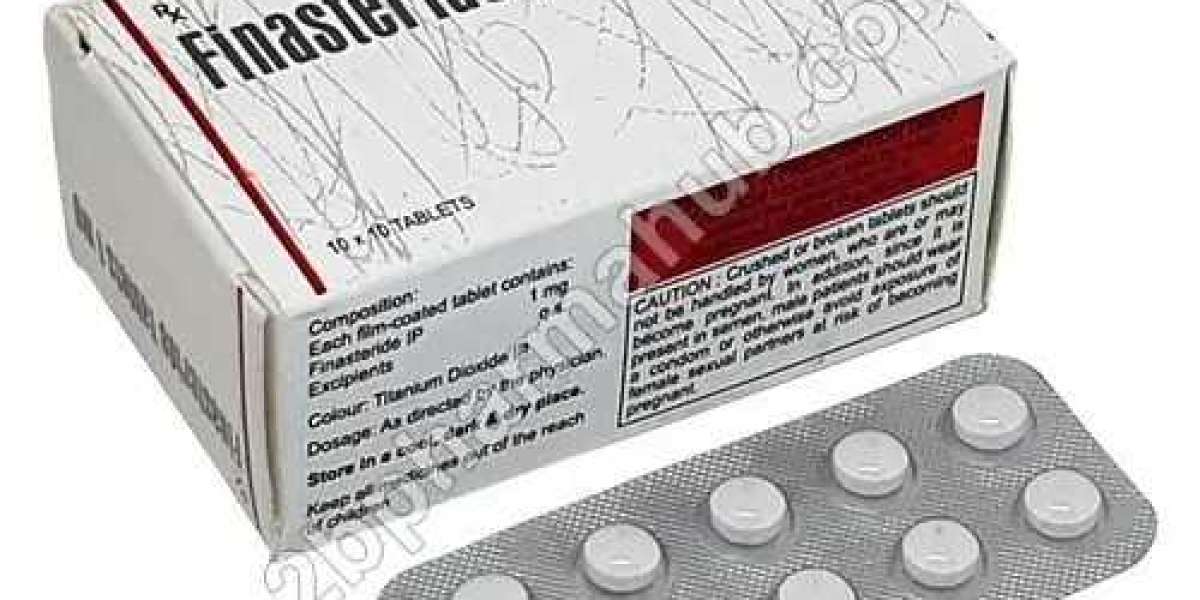Finasteride 1mg is widely prescribed for the treatment of androgenetic alopecia (male pattern baldness). As a healthcare provider, it is essential to offer clear guidance to patients considering this treatment to ensure they understand its benefits, potential risks, and the need for consistent use. By counseling patients effectively, healthcare providers can improve treatment outcomes, patient satisfaction, and adherence. This article will outline best practices for counseling patients on Finasteride 1mg, focusing on the key aspects of patient education, managing expectations, and addressing concerns.
Explain How Finasteride 1mg Works
Finasteride 1mg is an oral medication that works by inhibiting the enzyme 5-alpha-reductase, which converts testosterone into dihydrotestosterone (DHT). DHT is a hormone linked to hair follicle shrinkage, which leads to hair thinning and eventual hair loss. By reducing DHT levels, Finasteride helps slow hair loss and promotes hair regrowth.
Key Counseling Points:
- Emphasize that Finasteride does not restore all lost hair but can help slow or prevent further hair loss.
- Inform patients that it may take 3 to 6 months of consistent use to notice visible results.
- Highlight that the effects of Finasteride only last as long as the medication is taken. If patients discontinue treatment, hair loss will likely resume within 6 to 12 months.
Set Realistic Expectations
Managing patient expectations is a critical component of counseling. While Finasteride is an effective treatment for many patients, it may not work for everyone. It is important to communicate that individual responses to the medication can vary.
Key Counseling Points:
- Explain that approximately 85% of men taking Finasteride 1mg will experience slower hair loss, while about 65% will see some degree of hair regrowth.
- Stress that visible improvement may take several months, and maximum benefit is typically observed after one year of continuous use.
- Advise patients to remain patient and consistent with the medication, as stopping treatment prematurely may hinder progress.
Address Side Effects and Safety Concerns
While Finasteride 1mg is generally well-tolerated, some patients may experience side effects. A small percentage of men (approximately 1-2%) report sexual side effects such as reduced libido, erectile dysfunction, or decreased ejaculate volume. Addressing these concerns upfront helps foster trust and transparency between the healthcare provider and the patient.
Key Counseling Points:
- Inform patients that sexual side effects are rare and typically reversible once the medication is discontinued.
- Encourage patients to report any persistent side effects. In some cases, dose adjustments or alternative treatments may be considered.
- Reassure patients that Finasteride does not affect fertility, despite its impact on sexual function in some individuals.
- Discuss that in rare cases, Finasteride may lead to mood changes or depression, and patients should be encouraged to monitor their mental health while on the medication.
Consider Contraindications and Drug Interactions
Finasteride 1mg is contraindicated in certain patient populations. It is critical to screen patients for any conditions or factors that may make Finasteride unsafe for them. Additionally, healthcare providers should be mindful of potential drug interactions.
Key Counseling Points:- Remind patients that Finasteride is not suitable for women or children and should not be handled by pregnant women due to the risk of fetal harm.
- Review the patient’s medical history to rule out any conditions that may contraindicate the use of Finasteride, such as liver disease.
- Check for potential interactions with other medications the patient may be taking, especially those affecting hormone levels or liver metabolism.
- Suggest incorporating the medication into the patient’s daily routine, such as taking it at the same time each day (e.g., with breakfast or before bed).
- Explain the importance of adherence, stressing that missed doses or stopping treatment will lead to a loss of the benefits gained.
- Offer solutions for patients who struggle with remembering to take their medication, such as setting reminders or using a pill organizer.
- Schedule follow-up appointments to assess progress, check for side effects, and ensure the patient is responding well to the treatment.
- Encourage patients to continue taking Finasteride for as long as they wish to maintain hair regrowth, explaining that stopping the medication will result in a reversal of its effects.
- Consider recommending periodic blood tests to monitor DHT levels and assess liver function in long-term users.
- Be sensitive to the emotional effects of hair loss and reassure patients that their concerns are valid.
- Suggest additional resources, such as counseling or support groups, for patients who may benefit from emotional support during their treatment journey.
- Remind patients that treatment with Finasteride can help improve their appearance and confidence over time.
- Recommend topical treatments like minoxidil to be used in conjunction with Finasteride for enhanced results.
- Encourage a balanced diet rich in vitamins and minerals that promote hair growth, such as biotin, vitamin D, and iron.
- Suggest reducing stress levels, as stress can exacerbate hair loss.








